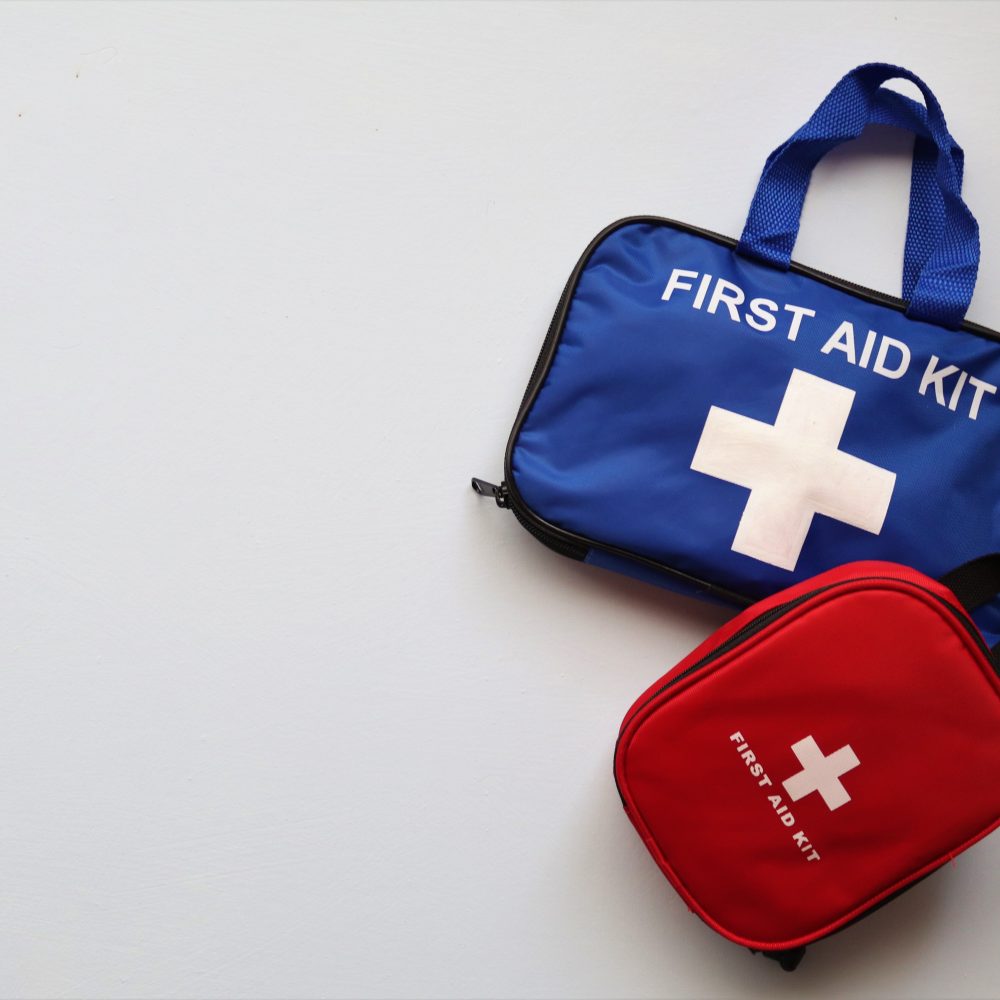
No matter where you live, a first aid kit is vital. Emergencies happen suddenly and happen anywhere.
A first aid kit should contain a wide variety and quantity of items, any of which might prove useful in an emergency situation. A two-person household would require a smaller quantity of supplies than a much larger household, or a company workplace, school, church, and other public buildings.
It is advisable to have a first aid kit at home, in the car, in church, in schools, in the workplace, and when on leisure outings, like camping, hiking, or boating.
First aid kits, kept in a first aid bag, first aid cupboard, first aid box, or first aid pouch, should be examined on a regular basis and the contents updated. Out-of-date items should be discarded and replaced with fresh supplies.
For a household kit, keep a batch of any medication necessary for which any member of the family has to take for a chronic complaint.
Make sure that a flashlight is included or is kept nearby. Keep the batteries separate from the flashlight until ready for use. For easy access, keep household kits where they can be easily reached, in a location that every responsible person in the household knows.
Essential Items in a First Aid Kit

Here are some essential First Aid items:
- AED (automated external defibrillator) to assist the heart in re-establishing its natural rhythm
- Alcohol wipes to aid in the prevention of infection
- Antibiotic ointment to aid in the prevention of infection in minor cuts, bruises, and burns
- Antibiotic wipes/Antiseptic cleaning wipes disinfect cuts and bruises to prevent the skin from becoming infected.
- Aspirin, preferably chewable, for relief of pains and aches
- Bandages of all sizes and materials: plastic, adhesive, elastic, and cloth, and bandages designed for specific parts of the body, e.g elbow bandages, knee bandages, fingertip bandages, hand bandages, triangular sling bandages with their accompanying safety pins, patch bandages, and conforming gauze roll bandages
- Blanket – an emergency thermal blanket that will provide protection in all types of weather conditions
- Cellular phone to call the emergency service. Keep the phone fully charged.
- Cold compress, instant and reusable, for the relief of pain and swelling usually caused by strains and sprains, toothache, and insect bites
- Dressing pads of gauze, of different sizes for the dressing of wounds
- Face shield with one-way valve, latex-free, to protect the rescuer from contamination from the victim’s oral secretion. The one-way valve keeps the barrier from leaking or falling apart during CPR
- First Aid Guide published by a reputable source, like the American Red Cross
- Flashlight; keep batteries separate when not in use
- Gauze pads, waterproof and sterile, to keep large cuts and bruises dry even when bathing
- Gloves are latex-free and strong for physical examinations. Exam gloves provide clean fingers for the victim’s benefit and provide a barrier for the rescuer’s benefit. Exam gloves come in several sizes, so it’s a good idea to buy a box and stock your first aid with your own size.
- Hand sanitizer in individual packs and aroma-free
- Hydrocortisone provides temporary relief from itching caused by skin irritations
- Hydrogen peroxide antiseptic to treat minor cuts and abrasions
- Ibuprofen to treat minor pains and aches
- Insect bite swabs to relieve the sting and discomfort of insect bites
- Moleskin for pain relief from corn to prevent blisters and provide protection from shoe friction.
- Scissors, in good repair
- Shears in good repair
- Tape roll, waterproof to keep dressings and bandages dry and in place around wounds
- Thermometer, oral and for individual use
- Trauma pads to help stop bleeding
- Tweezer, plastic preferably
Suppliers of First Aid Kits
First Aid kits can be bought from the American Red Cross Store or ordered online, and come in basic and in deluxe sizes. Prices range from $20 to $40 depending on the quantity of the contents.
You can compile your own First Aid kit by putting together supplies from the above list and including items essential to your family, like any prescribed medication.
Some companies offer free promotional first aid kits, empty first aid kits, or some supplies online, including first aid videos as free downloads.
Other companies offer free kits with purchases over a certain amount. Also, first aid wholesale suppliers can provide supplies in quantities needed.
This fitness store offers four categories of supplies: cuts and bruises; burn injuries; eye injuries, and emergencies. Note that the supplies or contents of a first aid kit differ depending on the location of the first aid kit, for instance, a sports first aid kit would differ from one that is meant for an office workplace, or a school

Beth is Cloudmineinc’s senior health editor and a certified personal trainer. She has over 10 years experience as a science journalist and is the author of two books. She deadlifts over 315 lbs.